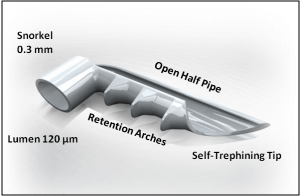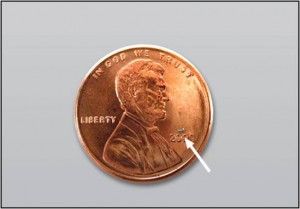What is glaucoma?
Be Eye Wise and learn that glaucoma is an eye condition where pressure builds up in the eye because fluids are not draining properly. This pressure can damage the eye’s optic nerve, eventually causing vision loss.
There are several types of glaucoma.
Open-angle glaucoma occurs when ocular fluid cannot pass through the eye’s filtration system (trabecular meshwork) to the drainage canals.
Angle-closure glaucoma occurs when the drainage canals are blocked. It can progress chronically or acutely.
Low-tension glaucoma occurs when a patient with normal-range pressures experiences optic nerve damage.
Childhood glaucoma begins in infancy, childhood or adolescence and includes congenital glaucoma.
Symptoms of glaucoma can be:
- Vision loss.
- Small blind spots.
- Tunnel vision.
- Blurred vision.
- Severe eye pain.
- Headaches.
- Halos or rainbows around light.
- Nausea and vomiting.
Causes of glaucoma can be:
- Elevated intraocular pressure.
- Family history of glaucoma.
- Abnormal optic nerve anatomy.
- Are over age 40.
- African or Asian descent.
- High degrees of myopia.
Glaucoma Symptoms and Treatment
When it comes to glaucoma, prevention is the best treatment. Routine eye exams that test the pressure of your eyes will catch glaucoma before it progresses. The sooner detected, the more we can help you maintain your vision, so please schedule an appointment with a Northwest Eye doctor.
While there is no cure for glaucoma, effective glaucoma treatment is available at Northwest Eye. Glaucoma treatment depends on the type and severity of your condition. A Northwest Eye ophthalmologist will thoroughly exam your eyes to evaluate your type of glaucoma and determine the best course of glaucoma treatment.
Glaucoma treatment may include:
Glaucoma medication. This type of medicine can help reduce the fluids produced by the eye or improve the eye’s drainage. It can be taken orally or topically (applied to the eyes in the form of eye drops).
Glaucoma surgery. If medication isn’t enough, our board-certified ophthalmologists are highly trained surgeons who will help you understand your surgical options and support you throughout the process.
Glaucoma Surgery Options
iStent – a minimally invasive microtube placed into the drainage structure of the eye to relieve intraocular pressure (IOP).
Trabeculoplasty (SLT) – Micropulse Laser Trabeculoplasty – a laser treatment that improves drainage by treating the trabecular meshwork.
Glaucoma Tube Shunt – an outpatient procedure to drain away excess eye pressure.
Filtering surgery – an outpatient procedure that improves drainage by removing a tiny amount of eye tissue and placing a drainage tube if necessary.
Cyclophotocoagulation – a laser procedure that decreases fluid production by treating the part of the eye that produces fluid.
Be Eye Wise and schedule a consultation with a Northwest Eye glaucoma doctor today. Because the more you know, the better you see.
iStent Glaucoma Surgery
In the past, glaucoma and cataract surgery were two separate procedures. In 2012 the FDA approved a device called the iStent Trabecular Micro-Bypass Stent System to treat symptoms of glaucoma. This is the first device that has been approved in conjunction with cataract surgery to reduce intraocular pressure (IOP) in adult patients with mild or moderate open-angle glaucoma and a cataract who are currently on IOP medication.


The smallest device ever approved by the FDA (0.5mm x 1mm), iStent is so tiny that you cannot see it or feel it—it’s about the size of a third of a grain of rice. iStent creates a permanent opening in your trabecular meshwork and helps improve the flow of fluid from your eyes to regulate IOP.
Among many advantages, iStent:
- Protects eye tissue that often gets damaged by traditional surgeries.
- It can be safely implanted during cataract surgery.
- It has a rapid recovery time.
- Allows for future treatment options for preserving vision.
Before Surgery
You should continue using any prescribed eye drops until your operation unless directed by your doctor. Your surgeon will go over all your medications, especially if you take blood thinners such as Coumadin. Bring a list of your current medications and a brief medical history to your pre-operative appointment.
During the Surgery
The cataract removal and iStent procedure are usually performed under local anesthesia. Your surgeon will first perform the phacoemulsification procedure to remove the cataract. With an ultrasonic device, the cloudy lens is broken up and removed and an artificial intraocular lens (IOL) is inserted. Using the same incision, the titanium iStent will be inserted by a preloaded, single-use, sterile applicator. Your surgeon will slowly advance the iStent into the trabecular meshwork of your eye and push the button on the inserter to release the iStent. The cataract removal and iStent implant only take about 15 to 20 minutes per eye.
After the Surgery
iStent is an outpatient procedure, and you can go home the same day. After the surgery, your eye may be covered by an eye shield that you can remove the following morning. You will receive antibiotic and anti-inflammatory eye drops to use for the next four to six weeks. Most likely, you will see your ophthalmologist the following day.
Recovery time is quite quick, but your doctor may recommend that you take an entire week off from work. You should refrain from strenuous activities like sports, lifting heavy objects or straining as this will increase your eye pressure.
Results
The iStent device has proven to lower IOP as much as 2.4 to 9 mm HG when combined with cataract surgery. The iStent procedure does not increase the risk of cataract procedure and both are extremely safe. More than six percent of iStent patients have been able to discontinue glaucoma drops after surgery so there is a good chance you may be able to discontinue your glaucoma drops after this procedure.






